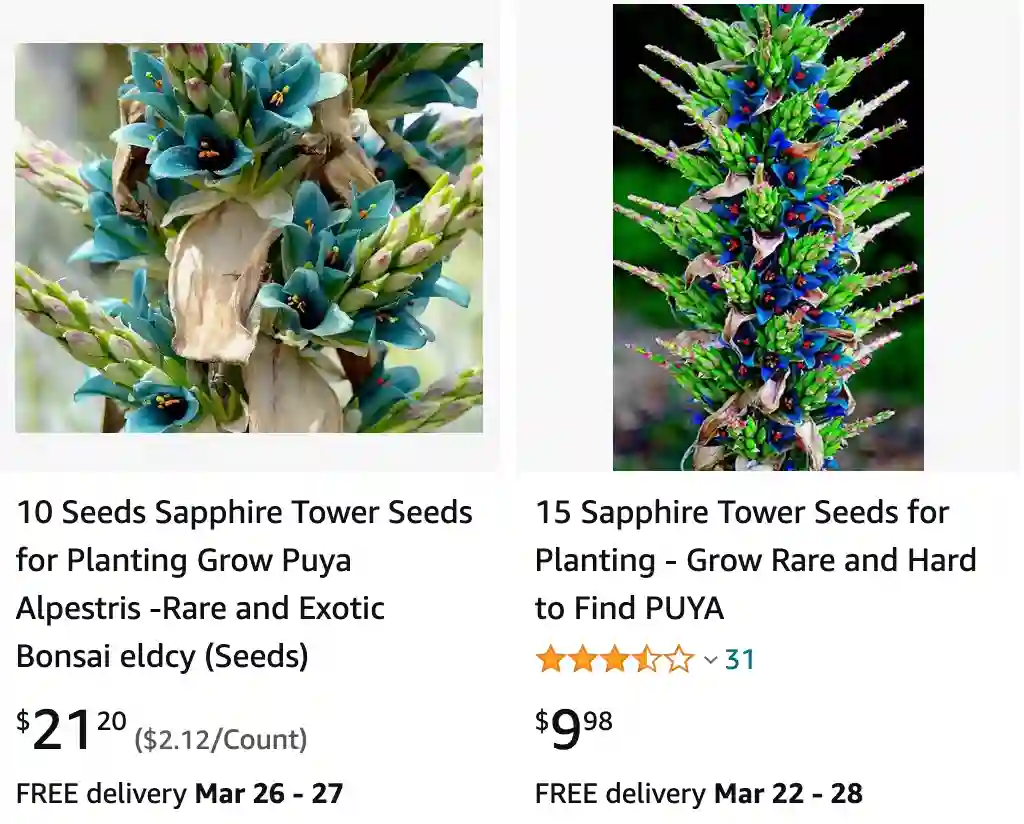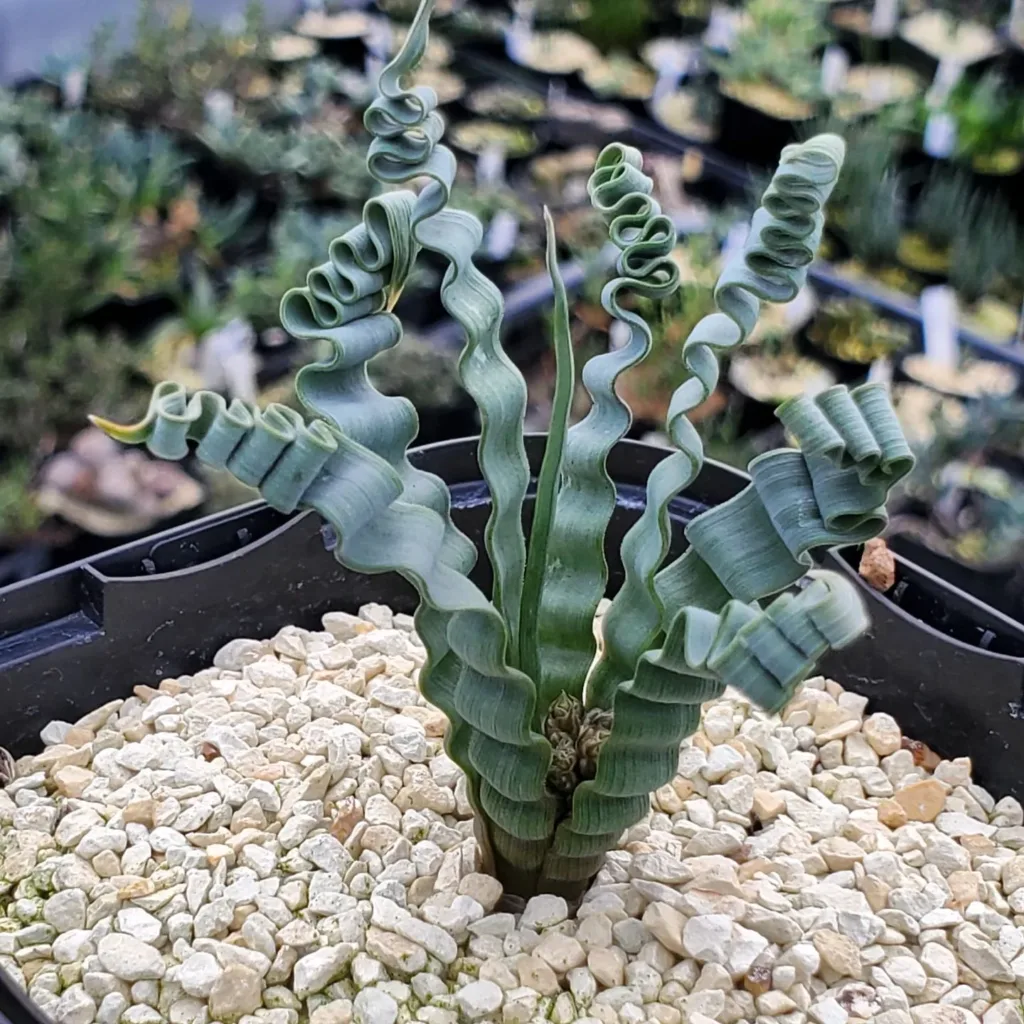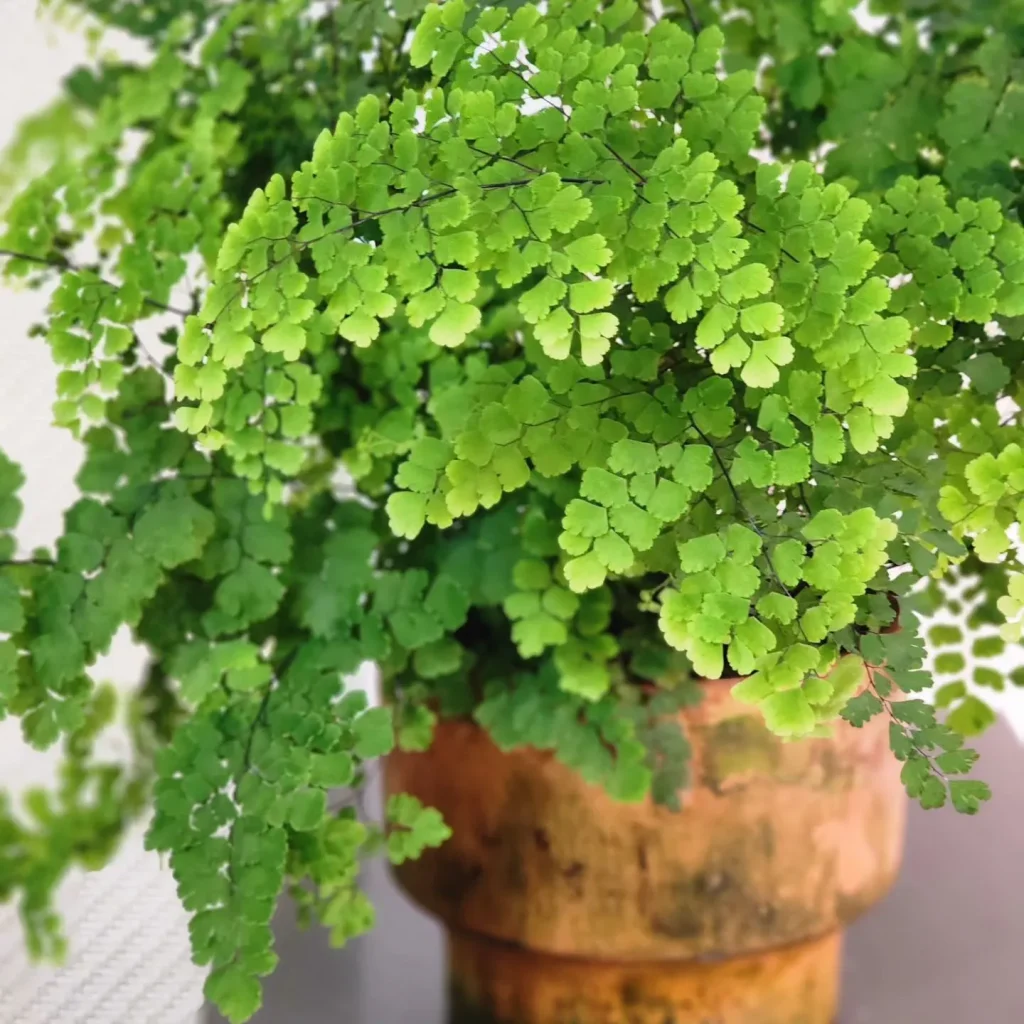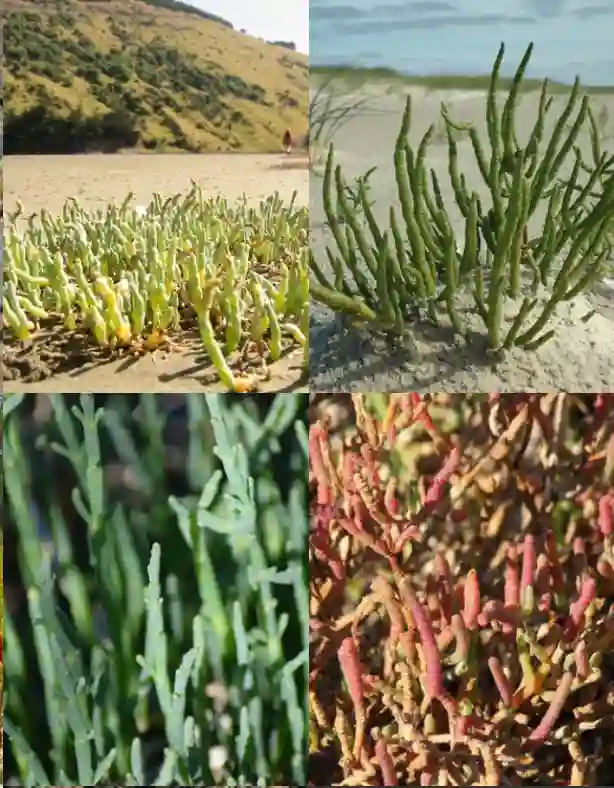
The Sapphire Tower Plant, known scientifically as Puya Alpestris, is one of those rare gems that caught my attention with its vibrant, otherworldly blooms. Imagine a plant that grows with a striking blue-green hue, resembling something from a sci-fi movie. With its deep sapphire flowers and brilliant orange stamens, it’s no wonder this plant has become a conversation starter in my garden.
232 Species in Genus Puya
What Is the Sapphire Tower Plant?
The Sapphire Tower Plant, also called the Blue Sapphire Tower Plant, is native to Chile and belongs to the bromeliad family. What makes this plant so special is its rare bloom. When it flowers, which doesn’t happen every year, the display is absolutely breathtaking. The blooms are a deep, iridescent blue, which is an unusual color in the plant world. The contrast between the blue petals and the bright orange stamens is mesmerizing. If you’re patient enough, the wait for the Sapphire Tower Plant blooms is well worth it.
How to Grow Puya Alpestris?
Growing Puya Alpestris, or the Sapphire Tower Plant, requires some care and attention to detail. It thrives in USDA hardiness zones 8 to 11, so it prefers warmer climates. However, I’ve found that even if you live in a slightly cooler area, you can still grow it with the right care. The key is providing it with well-draining soil and plenty of sunlight. This plant loves the sun, and giving it at least six hours of full sun daily ensures healthy growth.
When planting your Sapphire Tower Plant, make sure it’s in soil that doesn’t retain too much moisture. It’s drought-tolerant and can withstand dry conditions, but it doesn’t do well with soggy roots. I usually water mine sparingly, allowing the soil to dry out completely between waterings.
How to Grow Puya Alpestris from Seed?
Growing Puya Alpestris from seed can be a rewarding experience, though it requires patience. First, you’ll need fresh seeds, which you can sometimes find at specialty nurseries or online. The seeds need to be sown on the surface of a well-draining seed mix, and then lightly covered with a thin layer of sand or fine grit.
I’ve had the most success germinating the seeds in a warm environment, around 70-80°F. Keeping the seed tray in bright, indirect light and misting it lightly to keep the top layer moist helps with germination. Don’t expect quick results though—germination can take several weeks to a few months. Once the seedlings are large enough to handle, you can transplant them into individual pots.
Sapphire Tower Plant Care
Taking care of the Sapphire Tower Plant isn’t too difficult once you know what it likes. It’s a slow-growing plant that doesn’t demand much, but it does appreciate good drainage, plenty of sunlight, and protection from frost. In terms of feeding, I typically use a balanced fertilizer in the spring, but I keep it light since the plant doesn’t need much in terms of nutrients.
If you’re growing it in a container, make sure the pot has plenty of drainage holes. You don’t want water to collect at the bottom, which can lead to root rot. The Sapphire Tower Plant is also relatively pest-resistant, which is always a plus in my book.
Sapphire Tower Plant Indoor Care
Can you grow the Sapphire Tower Plant indoors? Yes, but it requires some adjustments. I’ve kept one indoors near a bright, south-facing window. The key is to provide it with as much light as possible. Without sufficient light, the plant won’t thrive and may become leggy. Also, be careful not to overwater it. Indoor environments tend to have less airflow, so the soil takes longer to dry out.
When keeping it indoors, consider placing it in a room with higher humidity, or mist it occasionally. This mimics the more humid conditions of its native habitat, ensuring the plant remains healthy.
Where to Buy Puya Alpestris?
Finding the Sapphire Tower Plant can be a bit of a challenge. Most local nurseries don’t carry it, so I’ve had better luck finding it online. There are specialty plant nurseries and online shops that offer Puya Alpestris, either as seeds or young plants. If you’re purchasing seeds, make sure they’re fresh for the best chances of germination. For live plants, look for nurseries that specialize in rare and exotic plants, as they’re more likely to carry this stunning species.
How to Propagate the Sapphire Tower Plant?
While growing Puya Alpestris from seed is one method of propagation, you can also propagate it through offsets. Once the plant matures, it may produce offsets, or pups, around the base. These can be gently separated from the main plant and potted individually. I recommend letting the offsets dry out for a day or two before planting to reduce the risk of rot.
What to Plant with Sapphire Tower Plant?
If you’re thinking about companion plants, consider pairing the Sapphire Tower Plant with other drought-tolerant species. Succulents like Agave, Yucca, or Echeveria make great partners since they share similar soil and water requirements. I’ve planted mine alongside some silver-leaved plants, which really make the blue flowers pop when it’s in bloom.
What Is the Sapphire Tower Plant Zone?
The Sapphire Tower Plant thrives in USDA zones 8 to 11, which includes regions with mild winters. If you live in a cooler area, you can grow it in a container and bring it indoors during the colder months.
How Often Does the Sapphire Tower Plant Bloom?
The blooms of the Sapphire Tower Plant are infrequent and can take several years to appear. However, when they do, the display is unforgettable. Once the plant matures, you can expect it to bloom every few years.
Is the Sapphire Tower Plant Toxic to Pets?
This is a common concern for pet owners. Fortunately, the Sapphire Tower Plant isn’t known to be toxic to pets. However, it does have sharp spines along its leaves, so it’s best to keep it out of reach of curious animals or place it in an area where they can’t easily brush against it.
Final Thoughts
The Sapphire Tower Plant is one of those plants that may test your patience, but the reward is worth it. Its care is relatively straightforward once you understand its needs, and when it finally blooms, it’s a showstopper. Whether you’re growing it indoors or in your garden, this plant will undoubtedly be a centerpiece of attention.
If i die, water my plants!



